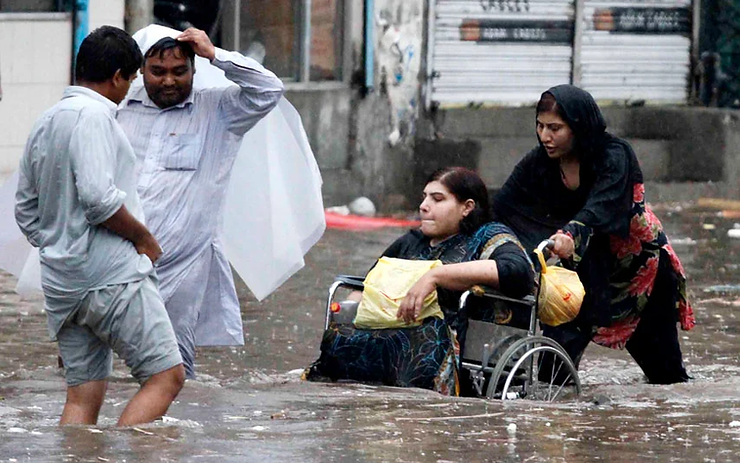By: Sunnie Gao
Pakistan always struggles to cope during the monsoon season, which is from June to August.
As particularly heavy rain battered Karachi this month, Mr. Hussian knew what wouldhappen. Water flooded into his house and filled the roads and surrounding area. At least one of his neighbors had died.
“It took us nearly two days to clean the water and get the house back to normal. There was no help from the government. Every year, the government says there will be no flooding, but the problem is getting worse,” said Mr. Hussian, 45, who works in a textile factory.
As global warming worsens, so do the monsoon seasons. However, Pakistan remains extremely ill-equipped and unprepared to handle these disasters.
According to the National Disaster Management Authority, in Karachi, Pakistan’s largest city, monsoon rains have killed at least 282 people over the past five weeks, many of them women and children. The rains have also damaged more than 5,600 highways and bridges, many of which were already in critical condition.
The rains have turned roads into rivers, filled homes with sewage, and cut off electricity. The devastation has brought the city to a standstill for days and has killed at least 31 people, many of whom were electrocuted or drowned after roofs and walls collapsed on them.
This devastation has set off protests from the citizens over the lack of government funding and support. Even before the floods had struck Karachi, the city was already in bad condition, with dilapidated buildings and roads crumbling, even though 40% of the city’s income was given to the government.
Murtaza Wahab, the Karachi administrator, acknowledged that the city had old drainage and sewerage infrastructure that could not cope with the torrential rains and said that updates were critical. But he also said the city fared better this year than in 2020 because the government began clearing clogged drains ahead of time while also building new ones.
The rainwater has also largely affected the business industry in Karachi, as it has flooded the location of most of its wholesale markets dealing in commodities and garments, causing traders a loss of billions of rupees.
“Traders rushed to their shops to shift their stocks to safe spots but to no avail, as there was so much water that the roads were impassable. It was complete incompetence of the government. Now the government should compensate the traders, who are already suffering from inflation,” said Hakeem Shah, a leader of Karachi’s traders.
After the flooding began in Karachi this month, Wasim Akhtar, a former Karachi mayor, blamed the provincial authorities that control the city’s local government.
“The people of Karachi pay billions in taxes to the government, but after every spell of rain, Karachi turns into a mess,” Mr. Akhtar said at a news conference. “Where is all the money that the provincial government gets from the federal government?”
But Mr. Shah, the chief minister, blamed the severity of the rain.
“The provincial government managed the situation in the best way it could,” Mr. Shah said at a news conference on July 12.
Whether it is the fault of the government or the rain, the severity of the matter does not change, and the city’s citizensare left to fend for themselves amidst the chaos.











